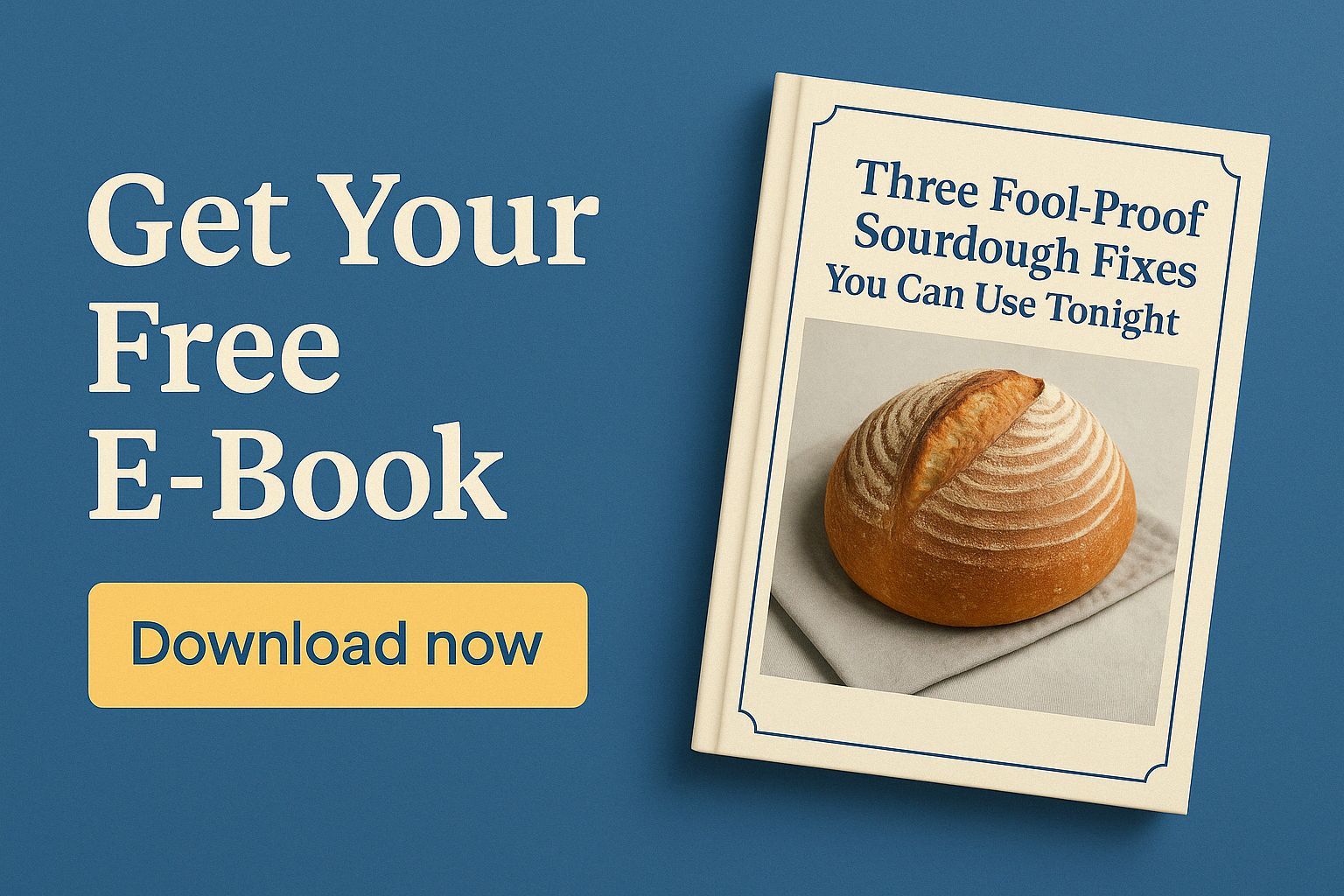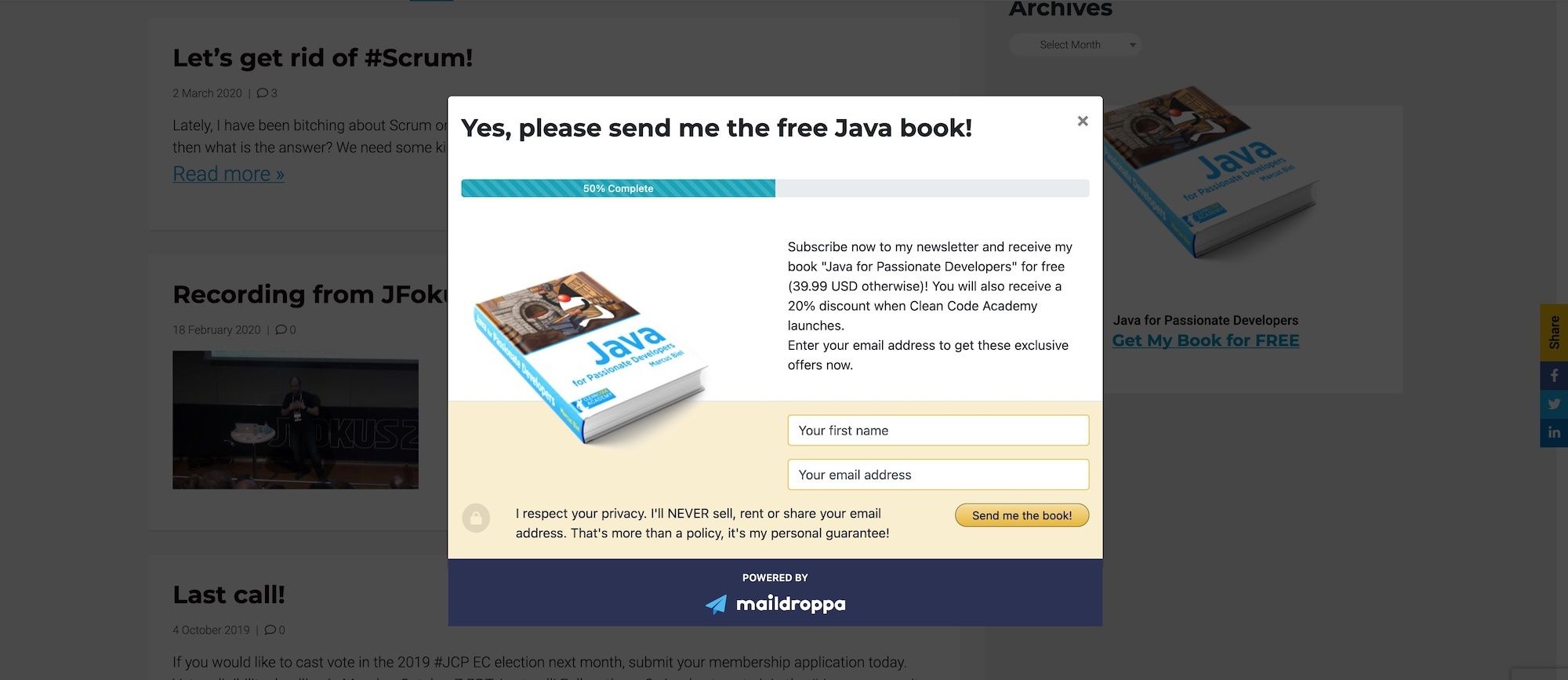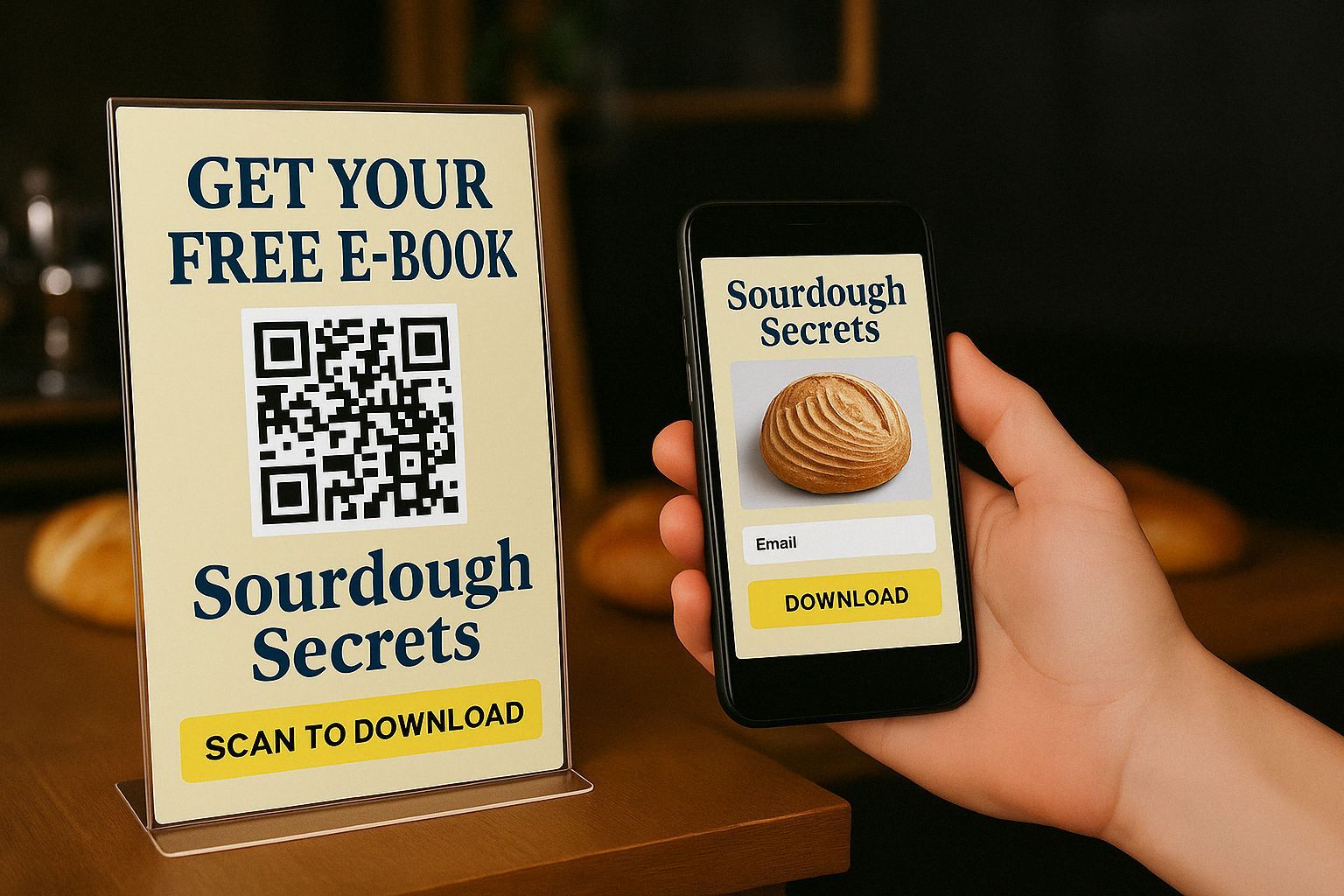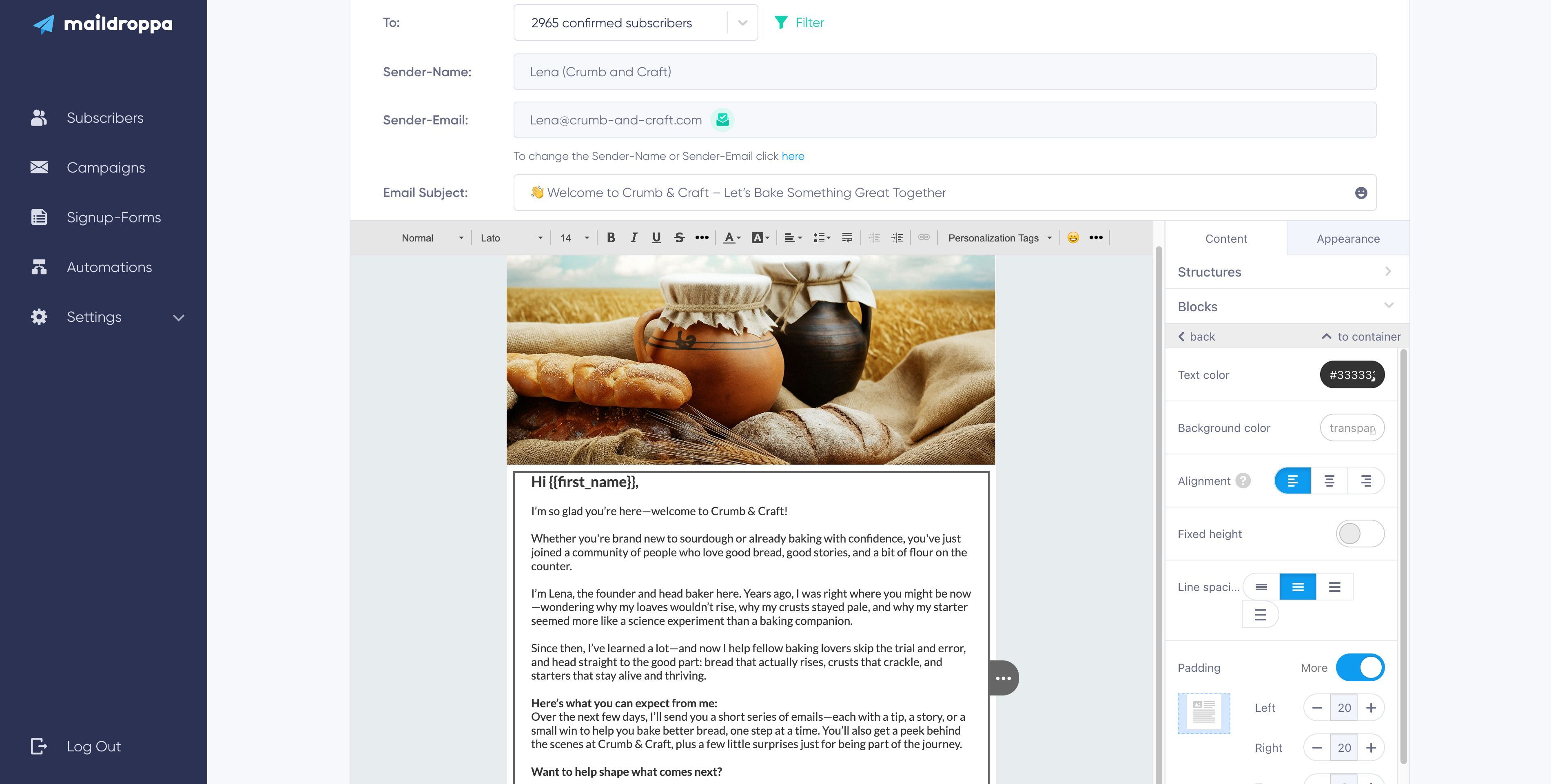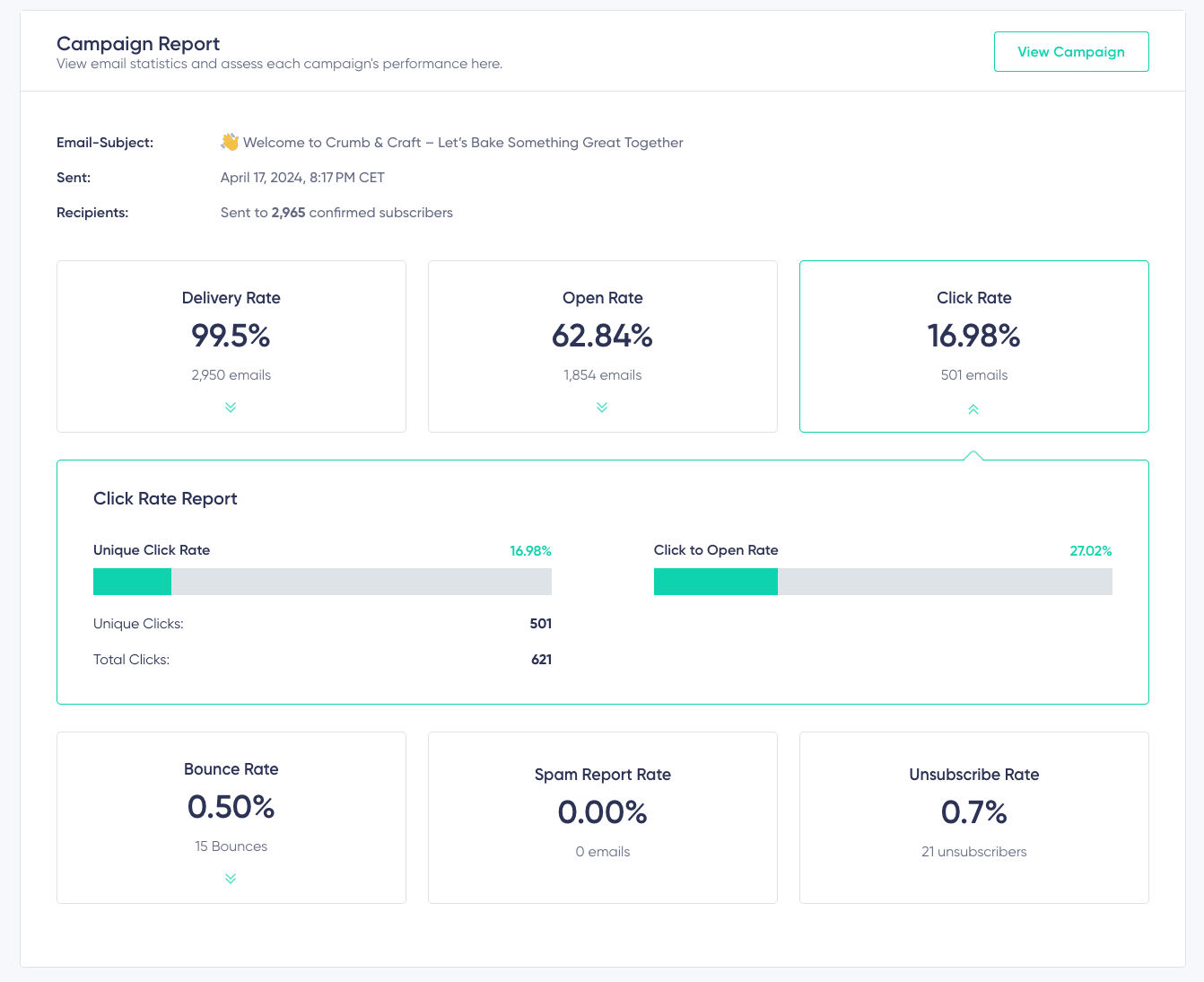Contents
the email tool that makes email marketing simple
How to Build an Email List from Scratch
Published: April 19, 2025
How to Build an Email List from Scratch
Email marketing still delivers one of the best returns in the business—about $42 for every $1 you spend. That’s why smart small‑business owners, from local boutiques to specialised B2B firms, keep relying on the inbox even while social ads and search campaigns fight for their budget.
However, numbers alone don’t guarantee results. Pack your list with every address you can scrape, and you’ll watch open rates plummet, costs rise, and genuine prospects slip away. What matters is quality: a list full of people who look forward to your emails, click your links, and trust your brand as valued email subscribers.
This guide tells you how to build your list from the ground up—the right way. You’ll learn simple, practical ways to attract the right subscribers, welcome them properly, keep them engaged, and turn them into loyal customers—no matter which platform you use, whether it’s Maildroppa, Mailchimp, ConvertKit, or something else.
Ready to grow a list that earns, not merely exists? Let’s begin.
Ask Before You Inbox: Permission First, Trust Forever
A thriving list begins with respect. Before you send the first tip or offer, get a clear “yes.” That means using a double‑opt‑in flow: a visitor fills out your form, receives a quick confirmation email, and clicks one button to seal the deal. This small step ensures you're reaching real people who want to hear from you. GetResponse’s 2024 benchmarks back it up–people who confirmed through double opt-in clicked links almost twice as often as those added with a single opt‑in—4.2 percent versus 2.4 percent. Quality starts right there.
The mechanics are simple. On every sign‑up form, include a short consent checkbox—“Send me weekly growth tips.” Under it, spell out how often you’ll write and what kind of content to expect. The moment someone hits Subscribe, fire off a branded confirmation email. Keep the subject line friendly, repeat the value promise in the opening line, then place one bold call‑to‑action: Confirm my subscription. As soon as they click, show a thank‑you page that links straight to any promised checklist or coupon. (You’ll send the real welcome email next—more on that in the upcoming section.)
This tiny three‑step ritual does three big things. First, it weeds out typos, bots, and spam traps. Second, it signals you respect the inbox—an attitude that pays dividends in future opens. Third, it sets expectations: subscribers know exactly when and why they will hear from you, so they are far less likely to tap the spam button.
Put the idea to work today. Toggle double‑opt‑in inside your marketing platform, tighten the promise copy on your form, and rewrite your confirmation email for speed and clarity. Over the next thirty days, watch two dashboard numbers—spam‑complaint rate (keep it under 0.1 percent) and confirmation rate (shoot for 80 percent or better). If complaint numbers creep up, sharpen your message; if confirmations lag, test a more compelling subject line.
This small yet powerful process lays the foundation to build your email list with trust and intention. Permission isn’t a hoop for people to jump through—it’s the first handshake in a long‑term, revenue‑producing relationship. Nail it now, and every tactic you try later will have firmer ground to stand on.
Know Exactly Who You Want to Attract:
Relevance keeps readers around. More than half of subscribers—56 percent, according to Campaign Monitor—hit “unsubscribe” the moment your emails stop feeling relevant. This highlights why the fastest-growing email lists aren’t the largest; they’re the most targeted.
Define your ideal subscriber in one concise sentence. Do this before designing your next signup form or crafting your subject line. This profile serves as a compass: “Busy café owners seeking quick lunchtime sales tips” or “First-time homeowners looking for budget-friendly DIY projects.” When you know exactly whose problem you're solving, everything from your content to your offers can speak directly to that subscriber and their need.
By defining your ideal audience, you lay the groundwork for better engagement and discover smarter ways to build your list. Whether it’s tailoring your content or narrowing your target for a lead magnet, it all starts with knowing who you’re talking to.
Defining your audience also makes it easier to use email effectively. When each message feels relevant and personal, subscribers are more likely to stay engaged and share your emails with others, helping you grow your list organically over time.
Keep an eye on your unsubscribe rate as a measure of how well you're targeting your audience. If it decreases, you’re on track; if it increases, revisit your ideal subscriber profile. Your content may have drifted, or your audience may have changed. Relevancy isn’t a one-time task—it’s an ongoing commitment that keeps your audience engaged.
Put it into practice: Write your one-sentence ideal subscriber description and place it above your screen. Review every new email or promotion through that lens. Over the next month, track your unsubscribe rate. If it drops, you’re resonating with the right people. If it rises, refine your profile and retest.
Create an Irresistible Lead Magnet
People won’t hand over an email address for nothing. They do it if what you offer feels worth the exchange. A lead magnet is a valuable offering, such as an e-book, checklist, or template, that you give for free in exchange for a subscriber's email address. It’s designed to attract the right people, start building trust, and increase email signups. Roughly half of marketers say that their sign-up rate jumps the moment a lead magnet appears on the form, and the winners share one trait: they solve a clear problem quickly.
Solve the pain that keeps your ideal reader up at night. For example, a neighbourhood bakery might promise “Three Fool-Proof Sourdough Fixes You Can Use Tonight,” while a B2B software firm could offer a “90-Second Cloud-Migration ROI Calculator.” Each of these delivers an immediate win and points directly back to the product or service you're offering, making it easy to connect your marketing campaign to real value. Avoid generic giveaways like tablets or gift cards; they attract a broad audience, but they don’t speak to your ideal subscriber’s specific needs.
Keep it snack-sized. Short videos, one-page checklists, and concise PDFs work best because subscribers can immediately benefit—often right from their phone. A quick success creates momentum, and momentum builds trust.
Deliver instantly. Ensure the download link is immediately available on your thank-you page and repeat it in your follow-up welcome email so no one has to hunt for it. The faster the promise is delivered, the quicker your new subscriber will feel the value of being on your list.
Put it into practice: Rewrite your sign-up headline to promise a specific, tangible result—something like “Cut Payroll Prep Time by 30 Minutes.” Run this offer for a week and aim for a 25% increase in conversions. Keep refining your headline and lead magnet until that bump becomes your new baseline.
Design a Frictionless Sign‑Up Experience
The easier it is to join your list, the faster it will grow. HubSpot’s analysis of over 40,000 landing pages makes the case clear: ask for only a name and email, and about one in four visitors says yes. Stretch the form to eight fields, and that win rate is cut in half. Every extra field is a pothole; smooth the road, and more people will drive through.
Start with the must‑haves—first name if you’ll use it, email for everything else. That’s it. Save questions about company size or birthday for later. Once someone is in, you can always learn more with a quick survey or by watching what they click.
Put the form where the eyes land first. A strip across the top of your homepage, a banner inside your best‑read blog post, a small bar that slides in after twenty seconds—each spot catches visitors when curiosity is high. Exit‑intent popups are a smart safety net, but also consider manual-trigger popups: these appear only when a visitor clicks something enticing, like an image of your lead magnet. They offer a smooth, user-friendly experience without interrupting the flow.
If you want to add this kind of behavior to your own site, Maildroppa is one of the few email marketing tools that supports manual-trigger popup forms out of the box—no extra coding needed.
Keep thumbs in mind on phones. Stack the fields in one column, use big tap targets, and let browsers autofill the email line. A clear button label like “Get My Free Guide” beats a dull “Submit” every time.
Trust lowers friction. Under the form, add one calm promise: “We’ll never share your address, and you can unsubscribe anytime.” A small lock icon helps the message sink in.
Finish strong. After the click, whisk new subscribers to a thank‑you page that loads fast and delivers the lead magnet with zero extra hoops. The swift reward turns a casual visitor into a warm lead in seconds.
Put it into practice: Strip your main form to name + email today, leave it live for a week, and measure the change. Aim for at least a 20 percent jump in sign‑ups. If the short version wins—spoiler: it usually does—make it permanent and let your welcome sequence gather any extra details you truly need.
Drive Traffic to Your Opt‑In Offers
A sign‑up form is only useful when people see it. Draw steady traffic, and the list will grow.
Start on your own site. Pop‑ups still convert. The average one wins about 4.65 percent of visitors, and the best‑timed versions climb past 10 percent, and sometimes even reach 60 percent. Show yours four to eight seconds in, or fire it when the mouse heads for the back button. That “exit‑intent” move alone can rescue 4–7 percent of would‑be leavers.
Scatter calls to action where value is felt. Slide‑in bars halfway through a guide, a short form under each post, and a sticky footer on mobile all catch readers at the moment your content lands.
Push the offer off-site. Pin your lead-magnet link in Instagram and TikTok bios, at the top of your Facebook page, and in the description under every YouTube video. Mention it in podcast outros. By sharing your offer across multiple social media channels, you turn casual followers into subscribers you can reach anytime.
Borrow a friendly stage. Swap guest posts, co‑host a webinar, or run a joint giveaway with a brand that shares your audience but not your product. Their fans get useful content; you get fresh, qualified names.
Use small-scale retargeting ads. A modest budget aimed at recent website visitors can often bring them back for just pennies per click. Since they're already familiar with your brand, conversions tend to stay high. Ensure the ad leads to a clean landing page with one clear promise and a single form.
Bridge the physical world. Place a QR code on your counter display or checkout sign. A quick scan beats typing in a web address—and turns foot traffic into signups.
Measure everything! Tag each link with a simple UTM code—little text bits like ?utm_source=instagram&utm_medium=bio. Google Analytics then shows which channel, post, or ad sends confirmed sign‑ups. Double down on the top three sources and trim the rest.
Put it into practice: Add your lead‑magnet link (with a UTM tag) to one new place today—say, your Instagram bio or a countertop QR code. Track sign‑ups for a week and aim for a 10 percent lift.
Launch a Warm, Effective Welcome Sequence
Your welcome email is the first real handshake—an instant when curiosity can turn into loyalty. WordStream’s data shows that this single message earns about four times the opens and five times the clicks of a normal campaign, so every line matters.
1. Immediate Delivery
Send your welcome email within five minutes of sign‑up. New subscribers are still “leaning forward,” making it the perfect time to engage them. Automate the thank‑you to arrive right away, deliver the promised freebie in the opening sentence, and give a quick preview of what they’ll get next.
2. Follow-Up Sequence
Follow up with three more touchpoints over the first week, each with a clear purpose:
-
Day 2: Share a quick win—perhaps a one‑minute tip that solves a common headache.
-
Day 4: Share a bite‑sized customer story so your reader sees proof that real people already trust you.
-
Day 7: Invite one low‑friction action: book a short call, explore your best‑seller, or redeem a small time‑limited coupon.
3. Personalization and Tone
Write as one person to one person. Use a first name where you can, sign off with a real signature, and spell out how often you’ll write. A clear promise today prevents “Why are they emailing me?” complaints tomorrow.
4. Encourage Engagement
Ask a simple question—“What’s your biggest hurdle with X? Just hit reply.” Any answer boosts your sender reputation and hands you language straight from the customer’s mouth.
5. Monitor Key Metrics
Watch three numbers:
-
The 60 percent open benchmark on Mail One
-
At least a 25 percent click‑to‑open on that same email
-
Spam complaints that hover near zero
When a metric sags, change one element at a time—send time, call‑to‑action, or preview text—and test again. For more detailed guidance on measuring and improving your email performance, refer to Sanctuary's article on email analytics and metrics.
6. Implementation
Draft the four emails today, send yourself a test pass to catch glitches, and flip the switch. Nail the first week and you’ll have subscribers who look forward to every next message.
Deliver Value in Every Email: Content That Keeps Subscribers Coming Back
A clean mailing list and a slick welcome series are only the starting point. If the emails that follow feel like ads, people will switch off. Each message has to answer one simple question for the reader: “What will I gain from this today?” Give them that benefit first and they’ll keep opening. The inbox algorithms will reward you, and sales will flow naturally—without any hard sell.
Lead with usefulness, not offers. A good rule of thumb is the 80/20 balance: roughly four out of five emails should educate, entertain, or inspire before you ask for a click that costs money. A boutique might share a two‑minute style tip video, then softly introduce the new summer dress collection. A B2B service firm could open with a brief case‑study takeaway—“How a café owner trimmed queue time by 30 percent”—and close with an unobtrusive link to book a demo. Give first, earn trust, then present the offer.
Match format to attention span. Short inbox‑friendly elements—checklists, GIF demos, 90‑second how‑to clips—often outperform long text walls. Readers can scan, learn, and feel the win before they’ve reached the train station. Reserve deep dives for gated content or blog links; your email’s job is to tease the reward and make the click irresistible, not house the entire lesson.
Stick to a rhythm you can sustain. Whether it’s weekly, bi-weekly, or monthly, consistency matters more than frequency. A predictable cadence—like every other Tuesday—helps your emails become part of your reader’s routine. For small teams, a bi-weekly schedule often strikes the right balance: frequent enough to stay visible, without burning through your best ideas. Don’t send more just to stay busy—strong content wins attention, not extra campaigns.
Use micro‑segmentation for laser relevance. You already tagged interests during the welcome flow; now let those tags shape your content blocks. A home‑improvement list might send the same newsletter skeleton to everyone but swap the lead story: garden ideas for outdoor DIY fans, paint hacks for interior decorators. Personalisation can be as simple as a conditional paragraph—yet it signals, “We made this for you,” and that feeling drives clicks.
Invite feedback and act on it. Drop a one‑line poll (“Was today’s tip helpful? 👍👎”) or a short P.S. (“Hit reply with topics you’d love to see next”). Each response is real‑world intel on what resonates. When readers notice you adjusting topics or frequency based on their input, engagement will jump again because they see their voice shaping the conversation.
Put it into practice: Look at your next scheduled send and ask, “What quick win does this email deliver before the pitch?” If the answer is fuzzy, reshape the content until the takeaway is crystal clear. Then set a calendar reminder to review open and click rates after three sends; double down on the sections that draw the most engagement and prune the rest. Value, delivered consistently, will turn your list from a cost centre into a compounding asset.
Deliver Consistent, Valuable Content—the 80/20 Way
Now let’s see what that 80/20 balance does in the real world. GetResponse’s latest benchmark shows a pattern: When marketers let roughly four‑fifths of every email teach, guide, or entertain, the average click‑through rate climbed from 1.9 percent in 2023 to 3.2 percent in 2024. Top performers—non‑profits, where helpful content is almost a credo—reached 6.7 percent.
Why does that blend work? Simple. Most inboxes overflow with deals and discounts; subscribers stop paying attention. Flip the ratio—keep 80 percent value and limit the direct ask to the remaining 20 percent—and readers open your messages because they expect help, not hype. Expectation turns into habit, and habits drive clicks.
When you plan each send, literally label your draft: Value 80 percent/Offer 20 percent. The value slice might be a two‑minute how‑to video, a tiny case study, or one fresh statistic readers can use that day. The offer slice stands alone at the end—a single coupon, booking link, or product spotlight. Separation avoids that bait‑and‑switch feeling and makes the offer feel earned.
Track one number to know you’re on course: click‑through rate. If it edges upward over three or four sends, your mix is resonating. If it stalls or falls, review the last email. Did the helpful part feel thin, or did the sales part muscle in? Adjust the ratio before you tinker with subject lines or send times.
Put it into practice now: Sketch your next four bi‑weekly emails, mark the 80/20 split, and schedule the send dates in your ESP. Keep the promise of steady, reader‑first insight, and the rising CTR curve will prove that your content is hitting home.
Segment and Personalise for Higher Relevance
Imagine walking into a shop and hearing the clerk call every visitor, “Hey, you!”—or greeting your best friend and a stranger with the same script. That’s what a mass‑blast email feels like. Segmentation fixes the problem by letting you greet each subscriber in words that match who they are and what they need. Done right, it’s a game‑changer: According to Strategic Vantage, segmented email campaigns can earn up to 760% more revenue than generic blasts.
Start with the simplest divide: tag newcomers “prospect” and buyers “customer.” Prospects get a friendly nudge (an FAQ plus a first‑purchase incentive), while customers see a thank‑you, a usage tip, and an upgrade offer. Same send‑time, different messages—each feels hand‑picked.
Next, let your platform gather richer signals with zero extra effort:
-
Behaviour: Clicked the pricing page? Tag them price‑curious and send a cost‑comparison guide.
-
Interest: Always opens gardening tips? Mark them gardening and keep the soil talk coming.
-
Location: A rain‑soaked Londoner cares more about umbrellas than beach towels—tailor accordingly.
Tags, custom fields, and behaviour triggers turn one big list into many small conversations.
Personalisation polishes the effect. Drop in a first name, reference the product they viewed, or swap a paragraph based on weather or interest. Keep it helpful, never creepy—only mention what they’ve willingly shared or clearly shown.
Smaller segments mean fewer sends, so measure quickly. Track opens and clicks, but let revenue per email be the final judge. When a segment overperforms, double down; when it lags, tweak the criteria or offer and try again.
Put it into practice: Add one tag today—“customer” vs “prospect.” Send each group a tailored offer: a loyalty coupon for customers, a first‑purchase deal for prospects. After a week, compare revenue per email. The lift, often double‑digit, will prove that even one smart segment beats a bullhorn. Add a second tag next month and watch your numbers climb toward that 760‑percent edge.
Keep Your List Healthy
Inactive subscribers are dead weight. When too many people stop opening or engaging with your emails, mailbox filters assume your content is unwanted and start sending even your best messages to spam. The cost is steep. Aspiration Marketing estimates that too many inactive addresses can reduce deliverability by up to 60 percent.
The solution? Regular, effortless maintenance. Every quarter, send a simple re‑engagement email to anyone who hasn’t interacted in the past 90 days. Keep the subject line clear and to the point: “Still want to hear from us?” Then, give them an easy choice to stay on your list:
Click “Yes, keep me” to stay, or do nothing to unsubscribe.
Send a few reminders over a week, and when the window closes, tag those who engage as “re‑engaged.” Remove everyone else from your list. Next, clean up any obvious dead weight: hard bounces, role accounts (info@, sales@), and anyone who’s marked you as spam. A lean list leads to lower costs, better engagement, and a stronger signal to inbox providers that your emails are wanted.
After each cleanup, keep an eye on three key metrics:
-
Hard bounce rate – Aim for under 0.5%.
-
Spam complaint rate – Keep it below 0.1%.
-
Open rate – You should see a noticeable lift after removing inactive subscribers.
If any of these rates spike, tighten your sign‑up process (double opt‑in, email verification) or shorten your re‑engagement window to 60 days.
Put it into practice: Set up your quarterly re‑engagement email now. After a week, remove non‑responders from your list. Then, track your bounce, spam, and open rates in your next campaign. If you’ve done it right, your list will be leaner, your emails will land where they belong, and your engagement will soar.
Measure, Test, Improve—Every Time
Email marketing is an ongoing optimization journey, and the key to its success lies in measurement, testing, and continuous improvement. Once you hit send, your work is just beginning. To build a high-performing email strategy, you'll need to consistently measure your results, test different elements, and refine your approach based on what works.
The beauty of email marketing is that it’s easily measurable, and with just a simple spreadsheet, you can track everything you need. By focusing on the right metrics, experimenting with your emails, and adapting based on the data, you’ll create a campaign that grows, evolves, and drives results over time.
Key Metrics to Track
-
Open Rates: These are the first indication of whether your emails are resonating. If people aren’t opening your emails, it likely means your subject lines aren’t compelling enough. Experiment with different subject line strategies—test curiosity-driven lines, urgency, personalization, and value-driven propositions. A/B testing subject lines regularly will give you the insights you need to improve over time.
-
Click-Through Rates (CTR): Once your email has been opened, the next step is engagement. Are people clicking the links inside? If not, you may need to refine your content or call-to-action (CTA). Test different CTAs, placements, and phrases to see what encourages the most clicks. Experiment with button colors, wording, or urgency to create more engaging CTAs.
-
Conversions: These are the bottom line. Whether you’re looking for a purchase, a sign-up, or any other desired action, conversions track the success of your email in driving that action. If conversions are low despite high open and click rates, review the alignment between your email content and your landing pages or offers. Adjust the offer or call to action based on your audience’s behavior and feedback.
-
Unsubscribes: A few unsubscribes are normal, but if you notice a sudden increase, it’s a sign that something’s off. Unsubscribes may indicate that your emails are no longer relevant to your audience or that your frequency is too high. Review the unsubscribes and look for patterns—are certain types of content triggering the exits? If you can pinpoint the cause, you can adjust your approach to keep your list healthier and more engaged.
-
Spam Complaints: A high spam complaint rate is a red flag and can severely damage your sender reputation and future deliverability. If this is happening, you may not be delivering the value you promised or respecting your subscribers’ preferences. Ensure your emails are always providing value, and review your opt-in process to make sure it’s clear and transparent.
Testing: The Key to Continuous Improvement
Email marketing is never a one-time effort—it’s an evolving strategy that requires regular testing and tweaking. The good news? Every campaign provides data that helps you refine and improve your approach.
-
Test Subject Lines: The subject line is the first point of contact with your reader. If it doesn’t grab their attention, your email won’t be opened. Regularly test variations of your subject lines—experiment with length, tone, personalization, and urgency. For example, see how “Last chance for 50% off!” compares to “Here’s your 50% off code—use it now!” A/B testing subject lines will help you discover which approaches generate the best open rates.
-
Test CTAs: The CTA is where the action happens. Whether you’re asking readers to make a purchase, download a guide, or schedule a call, the way you phrase and position your CTA can make a big difference. For example, try “Claim Your Offer” vs “Get Started” and see which drives more clicks.
-
Test Send Times: When you send your emails is just as important as what’s in them. The timing of your email can affect open rates and engagement. Experiment with different send times—early mornings, afternoons, weekdays vs. weekends—and track which produces the best results. You might find that certain segments of your list respond better to emails sent at specific times, so always test and adjust based on your audience. For more insights, refer to Maildroppa's guide on the best time to send marketing emails.
-
Test Email Design: A visually appealing email can encourage more engagement. Experiment with different designs and layouts. Test single-column layouts vs. multi-column ones, image-heavy vs. text-heavy emails, or minimal designs vs. more complex ones. Ensure that your design works well on mobile devices—most email opens happen on phones, so mobile-friendly emails are a must.
Continuous Improvement: Refine and Evolve
Once you’ve gathered data from your tests, it’s time to use that information to refine your strategy. Don’t just make changes and move on—constantly evaluate and improve your approach based on what you’ve learned.
-
Analyze Trends: Review your metrics over time. Look for trends in your open rates, CTRs, and conversions. Which subject lines consistently perform well? Which content resonates most with your audience? The more you analyze these patterns, the better equipped you’ll be to optimize future campaigns.
-
Refine Content Based on Data: If certain types of content are generating more clicks, lean into that. If educational resources or customer success stories are performing well, prioritize those. Continuously refine your content to give your audience what they find valuable, keeping your emails relevant and engaging.
-
Enhance Segmentation: As your data evolves, your segmentation strategy should evolve with it. While segmentation is often introduced early on, it’s crucial to refine it continually as more insights become available. This means reassessing your segments based on new behaviors, interests, or past interactions. Tailoring your emails to these refined segments will increase relevance and engagement, ensuring your content resonates with each group. For instance, you may find that certain offers perform better with prospects compared to customers, and adjust your messaging accordingly.
-
Iterate and Test Again: Optimization is a continuous process. Once you refine one element, go back to testing the next. Testing and iteration are essential to long-term success, and with every test, you’re learning more about your audience and improving your email strategy.
Keep It Simple and Consistent
While it’s important to track your metrics and experiment with different approaches, don’t overcomplicate things. A simple spreadsheet to track key metrics is enough to get started. Review your data regularly, measure your results, and focus on making small, incremental improvements. The beauty of email marketing is its scalability—by continuously measuring, testing, and optimizing, you’ll build a strategy that gets stronger with time.
Put it into practice today: Start by tracking your key metrics, running small tests, and making improvements based on your findings. As you refine your approach, you’ll see your engagement increase, your conversions rise, and your email list grow into a highly valuable asset that continues to deliver results.
Conclusion: Play the Long Game
Building an engaged email list is a task that rewards consistency and thoughtful effort. Successful email list building starts with delivering real value, respecting your subscribers, and being intentional in every interaction. Whether you’re looking to collect email addresses through high-converting forms or grow a quality mailing list with compelling lead magnets, the key is to focus on lasting relationships that convert. Choose one actionable step from this guide today—refine your sign-up process, enhance your lead magnet, or clean your list—and take that first step. With time and consistency, you’ll grow your email list, see engagement improve, and watch conversions increase. It’s not about quick wins—it’s about long-term success. Stay focused, keep refining, and watch your mailing list become one of your most valuable business assets.


